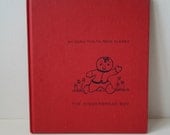Who doesn't love the book
Where the Wild Things Are? It's a true classic.
We use the Expressions math curriculum in our school district, and when one of the lessons asks kids to label parts of a monster, I think Wild Things. The lesson asks kids to draw a picture of a monster, count the different features, and write the corresponding numbers. Kids are supposed to draw things like 4 eyes, 8 teeth, 10 claws, etc. After reading
Where the Wild Things Are, I pass out large black construction paper and brand new boxes of oil pastels. This lesson is more than just math. It's math, art, reading, writing, and phonics, all rolled into one.

We spend a lot of time talking about the book, thinking about what's happening to the main character in the book, and looking closely at the Wild Things that Maurice Sendak has created. After a very quick introduction to oil pastels, a reminder to "think big" as they draw and fill their paper, and a brief modeling of how to draw a Wild Thing, kids are off to create. Once their Wild Things have been created, we ready to count and label. I give kids a form that says:
Wild Thing Math
by __________________
My Wild Thing has ______ _____________.
My Wild Thing has ______ _____________.
My Wild Thing has ______ _____________.
I model how to count the Wild Thing features, talking about parts of numbers as we go. For example, 5 claws and one hand and 5 claws on the other, gives us 10 claws altogether. We count, add, and then write the numbers on our papers. Then I model how to sound out words by saying the words slowly and writing the sounds we hear. We sound out words like horns, teeth, claws, stripes, and hands. I usually write the word EYES on the board for kids, because that's a tough one to sound out when you're in kindergarten.
I love to have parent helpers (or 6th grade girls, in this case) help trim around the Wild Things. It gives them a bit more shape, and let's be honest, sometimes kindergartners' art projects are tough to decipher. Once cut, we mount the writing with the Wild Thing. This year, kids did an especially nice job with their writing and sounding out words. This lesson takes a while, but I love it because it wraps so many different curriculum areas into one project. It's integration at its best!
Happy drawing, counting, adding, and writing!

































